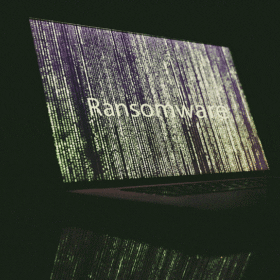Information security risk assessments are crucial for any businesses that deal with any sensitive information that could potentially cause harm if accessed, shared, modified, or deleted. In this article, we cover how your business can benefit from a security risk assessment, how they are conducted, and how you can use the assessment findings to improve your security posture.
How is a security risk assessment conducted? Information security risk assessments are conducted using six steps. The steps include identifying assets, identifying potential threats, identifying system vulnerabilities, analysing threat likelihood, determining risk impact, and creating a risk treatment plan.
Read on to find out more about the importance of security risk assessments and how they are conducted.
How is an Information Security Risk Assessment Carried Out?
A risk assessment procedure will ensure all risks are identified and will give you direction on task prioritisation as an organisation. Read on to find out more about the six-step assessment process:
Step 1: Identify & Value Assets
To ensure that efforts are focused where they are needed the most, your assessor will sit down with key business stakeholders to determine which information types need to be protected in order to ensure business security. The information types will be categorised based on value and importance to the organisation.
Step 2: Identify Threats
During this stage, your assessor will use industry and proprietary security threat databases, to identify all potential threats. These include known threats (manufacturers or suppliers) and unknown threats (hackers and malicious cyber-attacks). By the end of this stage, you will have a thorough picture of the current threat landscape for your business.
Step 3: Identify Vulnerabilities
The next stage of the assessment involves the identification of technical security vulnerabilities that could be exploited to gain access to information. This may include a vulnerability scan on hosting environments and computer systems. Find out more about the security testing services from Risk Crew here.
Your assessor should also audit the security policies and procedures in place within the business, network disaster recovery plans, password management, and more — depending on your organisation.
Step 4: Determine Likelihood & Impact
Taking into account the threat environment and business processes, your assessor will next predict and document the likelihood and impact of an attack. The calculated prediction will take into account your internal business processes, system architecture, access controls and possible motivations.
Step 5: Determine Inherent Risk
Following the step above, your assessor will also calculate the risk that attacks may carry for your business. The risk will be expressed in terms of the likelihood of the threat exploiting the vulnerability and the impact severity of that exploitation on the Confidentiality, Integrity, and Availability (CIA) of the system. The risk severity level is identified and documented within a report.
Step 6: Determine Treatment
The last, and possibly most important step, is determining the treatment for vulnerabilities found in your information systems. Your assessor will put together a report of their findings, including the threat landscape and vulnerabilities that they have identified.
The report will also include a prioritised roadmap of remedial activities to implement, in order of priority, to minimise system vulnerabilities and improve your business’s overall security posture.
What are the Benefits of an Informational Risk Assessment?
Apart from keeping your information secure, there are other benefits to conducting an information security audit:
Reduction in Long Term Costs
A data breach can be a huge, unexpected expense for businesses, from both direct and indirect costs associated with time and effort in clearing up an information leak. Not only do you carry the risk of losing brand credibility from bad publicity, but you may have to fork out for expert help to clear up the damage.
If the information accessed included personal data, you could also be liable for an expensive fine for breaching GDPR regulations.
While a risk assessment and security updates can seem expensive and timely, your risks for the above are minimised, and you’ll have peace of mind that your business is in the best position for avoiding any unexpected and expensive information leaks.
Meet Industry Compliances
There are numerous compliances that may be required for your business by governments or international bodies, such as the ISO 27001, created by the International Organisation for Standardization for implementing an Information Security Management System (ISMS). With an information security risk assessment, you can ensure you are fulfilling all of the compliance requirements, before being audited, and potentially failing due to unidentified issues within your business.
Risk Crew can help your organisation achieve and maintain ISO 27001 compliance through one of our four bespoke, cost-effective services. Find out more by visiting our ISO compliance page.
Employee Awareness
The results of your risk assessment can help you identify areas where staff may need more training on information security, and which employee processes may need to be improved. Ongoing and regular training sessions with employees help to encourage a security-first culture, which can help minimise risks of security breaches in the future.
For advice on how to ensure employees retain the information given during security awareness training, read our recent blog post.
Identify Security Threats Within Your Business With Risk Crew
Protect information within your organisation with the qualified experts at Risk Crew. Our skilled and experienced consultants implement gap assessments, audits, and certifications methodologies to enable you and your business to efficiently meet corporate governance and compliance requirements.
Find out more about our information risk assessment service here. If you have any questions, queries, or need advice, get in touch with our friendly team. We’re happy to help, it’s what we do.
People Also Ask
What is an Information Security Risk Assessment?
An information security risk assessment is a six-step process that helps to identify which systems and processes could be exploited to gain access to sensitive and confidential information within a business. The process identifies vulnerabilities that a cybercriminal could exploit or potential mistakes that staff could make.
The risk assessment will identify key areas for improvement and suggest steps to be taken to ensure potential threats can’t access secure business systems in the future.
What is the Purpose of a Security Risk Assessment?
An information security audit is vital for businesses that store or use sensitive information. The risk assessment helps those organisations identify, evaluate, and fix any security system vulnerabilities that could lead to information being accessed by unauthorised parties. The risk assessment will help a business to comply with regulations, such as the ISO 27001 standard, to help protect business information assets. Find out more about ISO 27001 compliance and our consultancy service here.
What Information Could be at Risk?
Valuable and protected informational assets will vary between businesses and industries. Possible protected information could include private employee and customer data, payroll details and financial accounts. This information could harm your business if accidentally accessed, modified, corrupted or deleted. Many types of sensitive information could also count as a DPA 2018 violation or GDPR data breach if accessed by unauthorised persons.



